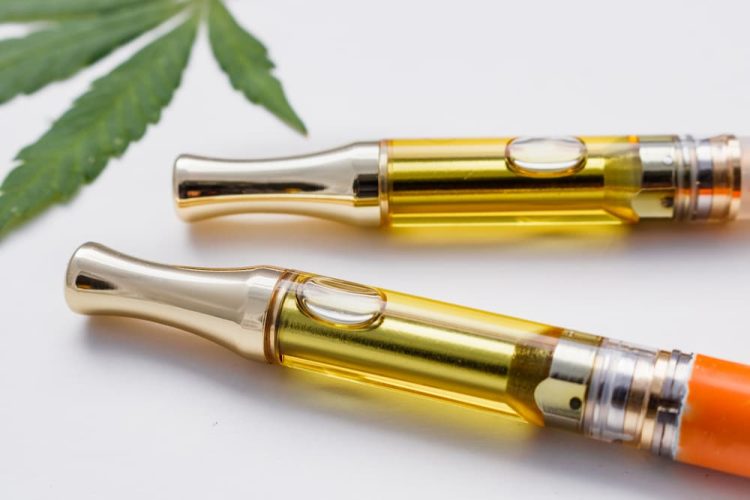In recent years the electronic vaping industry has seen an uptick in interest, with the market growing exponentially. There are hundreds of different vaping products available to suit different preferences, needs, and wants. However, tobacco vapes aren’t the only big player in the market.
The industry has evolved to include cannabis vapes with the legalization of the plant across many states allowing this niche vape market to grow. Yet, despite their growing popularity, many don’t realize that vaping liquid cannabis derived from the cannabis sativa L plant comes with numerous health and social implications. [1]
Many are beginning to question what is coming along for the ride when they vape cannabis and if the contaminants in aerosolized vapors are really as bad as experts claim. In our article, we will look at what people are vaping when they utilize cannabis vape products.
How Cannabis Vape Pens Work
Before examining what contaminants are believed to be consumed through aerosolized cannabis vapors, we thought it prudent to explain how “cannavaping” works. [2]
Essentially, vape pens vaporize dried cannabis leaves, oils, waxes, and buds that have been made with THC and CBD. A vape pen will heat its contents to 200 to 300 degrees celsius until the therapeutic and psychoactive cannabinoid components volatilize into droplets that become an aerosol vapor which the consumer then inhales. We should mention that dry herb vaporizers tend to be less harmful than liquid vaporizers.
This process is completed through the use of a battery-powered vaporizer. It heats the cannabis product and mixes it with diluent fluids and often flavorings inside a vapes tank.
The Contaminants Consumers are Exposed to With Vape Pens
Despite what you might have believed, the aerosol of a liquid cannabis vape is far more than simply water vapor, with evidence suggesting vaping cannabis can be more harmful than vaping nicotine. Many experts and recent studies conclude that cannabis vapes can contain pesticides, heavy metals, residual solvents, and other toxic by-products. However, the presence of contaminants in a vaping device will depend on the type of cannabis-derived (like the Sativa L plant). [1]
So how exactly are these contaminants making their way into a person’s body? Firstly most cannabis vape pens have poor temperature control. This means that the dry herb inside it is heated to the point of combustion beyond the point of aerosol. When this occurs, people inhale cannabis smoke which is known to contain ammonia, tar, and carbon monoxide. This is incredibly harmful to respiratory and lung health.
Secondly, immunocompromised individuals are at a greater risk of experiencing adverse health effects from vaping dry herb. Some harmful molds and bacteria that grow on cannabis plants or cannabis products can be inhaled once vaporized. Thirdly, when people vape cannabis oils or waxes like cannabis concentrates, they could be ingesting solvents and pesticides. Often the number of solvents and pesticides ingested is believed to be beyond safe levels when in a concentrated form.
Lastly, data has revealed that cannabis vapes can expose consumers to many types of dangerous heavy metals. This is because cannabis has begun being offered solutions or cartridges that can be used in vaping devices. Since testing has revealed that metals can leach from a vape’s filaments, solder joints, and metal coils, various heavy metals can enter a vapes liquid contents.
Further testing is underway into how elemental contaminants are inhaled using cannabis vaporizer aerosol devices. Yet, it’s evident that liquid cannavaping is no better than nicotine vaping and could even have worse health effects on consumers.
Image: The aerosol of a cannabis vape is far more than vape water. Elsa Olofsson/Unsplash
References:
[1] Seltenrich N. Cannabis Contaminants: Regulating Solvents, Microbes, and Metals in Legal Weed. Environ Health Perspect. 2019;127(8):82001. doi:10.1289/EHP5785
[2] Edward J. Conuel, Hau C. Chieng, John Fantauzzi, Kiran Pokhrel, Chananya Goldman, Thomas C. Smith, Anupama Tiwari, Amit Chopra, Marc A. Judson. (2020) Cannabinoid Oil Vaping-Associated Lung Injury and its Radiographic Appearance. The American Journal of Medicine 133:7, pages 865-867.












